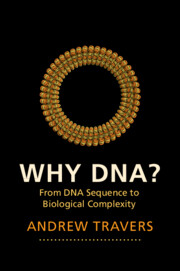
- Cited by 1
-
Cited byCrossref Citations
This Book has been cited by the following publications. This list is generated based on data provided by Crossref.
TRAVERS, Andrew 2024. The First Steps of Life. p. 217.
- Publisher:
- Cambridge University Press
- Online publication date:
- May 2022
- Print publication year:
- 2022
- Online ISBN:
- 9781107297241
- Subjects:
- Genetics, Life Sciences, Evolutionary Biology


